Paris for the weekend?
Adam Hay-Nicholls spends 48 hours in the French capital with the man behind the Michelin Guide
Ernest Hemingway described Paris as a moveable feast so, over two days in the city, I’m hitting up a selection of exclusive hotels and restaurants in the company of the man who dishes out the gastronomic spoils – director of the Michelin Guide, Gwendal Poullennec.
On the first evening, I check into the Château Voltaire. Located between the Louvre and the Paris Opera, it’s owned by Zadig&Voltaire and was previously the French fashion brand’s HQ. Founder Thierry Gillier likes to stay at Los Angeles’ Chateau Marmont and London’s Chiltern Firehouse, and both inspire the subdued décor and lived-in vibe of this 32-room Parisian hideaway, right down to the fringed velvet furnishings, thick carpets, earthy woodwork, subway-type tiling and branded notebooks on the bedside tables.
Poullennec, who rarely gives interviews, has booked a flashier location for dinner. The Hôtel de Crillon is, without question, one of the three grandest dames of the city’s hotel scene and has hosted everyone from Churchill and Chaplin to Madonna and Taylor Swift. The Crillon’s fine dining restaurant, L’Ecrin, reverses the traditional order by having guests first choose what they’re drinking and then leaving what they eat down to the kitchen.
The range of options dreamt up between Xavier Thuizat (officially France’s top sommelier) and chef Boris Campanella is head-spinning, especially given that the wine list is 2,300 bottles long, and Thuizat doesn’t restrict his recommendations to wine. Our party of 16, with exclusive use of the dining room, indulged in seven paired courses which included spider crab and caviar served with IWA 5 sake, porcini tart lubricated by tea normally only served to Chinese government ministers, stunningly flavourful lobster and wagyu, both paired perfectly with a 2016 Côte Rôtie ‘La Germine’ from Domaine Duclaux in the Rhône, and a rich chocolate dessert served with Cleopatra’s preferred plonk: Saint Barnabas Commandaria, from Cyprus.
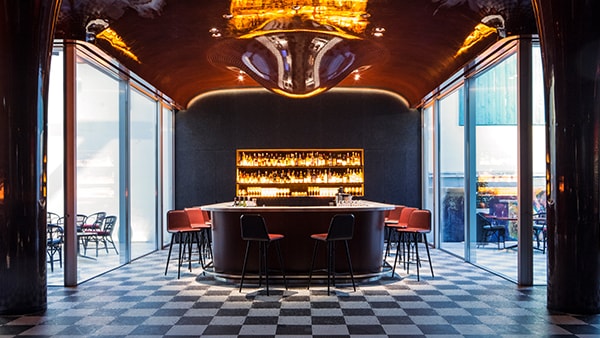
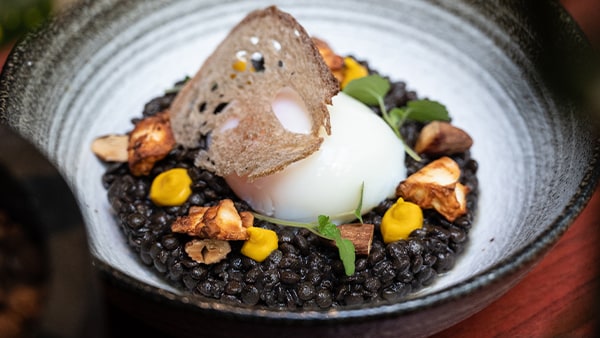
Poullennec certainly knows his way around a menu. Aged 44, tall, neatly bearded and wearing a slim-fit suit and tie, he’s been in charge of the Michelin Guide – or Guide rouge – since 2018, having worked his way up from a graduate position after leaving business school in 2004. “It’s been amazing to work for Michelin for 20 years without ever having to change a tyre,” he jokes.
Originally, the guide, which was launched in 1900, was devised as a way to create a road trip lifestyle for the owners of newfangled motor cars and thus to market Michelin’s tyres. The guide and its coveted stars have since expanded across the world, now covering 40 countries and counting. Though still part of the eponymous tyre producer, it is treated with reverence within the company. The inspectors and their protocols remain notoriously secretive.
In the last 15 years or so, there has been a shift to make the guide more adventurous by promoting young, fresh talent which has led to some grandees being dropped – and the need to handle this sensitively. I’m told by one of Poullennec’s lieutenants that it’s not unheard of for chefs to contact Michelin to express their dismay at losing their stars.
In so doing, the red book is beginning to shed its overripe and haughty image. The move to modernise is also seen in the guide’s delivery, which is now available as a slick app. Bookings can be made directly through it but, despite Michelin taking an e-commerce cut, it is at pains to ensure its editorial is completely independent and unbiased.
Lunch in the Marais the following day comes courtesy of chef Grégory Garimbay at Auberge Nicolas Flamel – an institution, to those in the know. It is housed inside a building dating from 1407, making it the oldest inn in the capital, but the food is modern and innovative and the team behind it young. The highlight of the seven courses is the finest roast chicken I’ve ever sampled, served with grilled romaine, fatty back bacon and an anchovy.
Over a golden 1994 Sauternes, the director sheds a little light on the lives of the inspectors. He won’t say how many there are, but “our team is 25 nationalities, and they are all full-time employees, not freelancers. On average, inspectors are eating out at restaurants 300 times a year. They sleep away from home 100-to-150 nights a year. The inspectors come to us from the food, beverage and hotel industries, and they only tell their nearest and dearest what they do. They need to retain their anonymity. We have chefs, restaurant managers, hotel managers, sommeliers – different profiles from across the industry.”
Unlike influencers and other websites, Michelin is paying its own way. With menus sometimes costing a fortune and the wine list too, what is the biggest expenses bill that’s been submitted? “I’m approving literally millions,” reveals Poullennec.
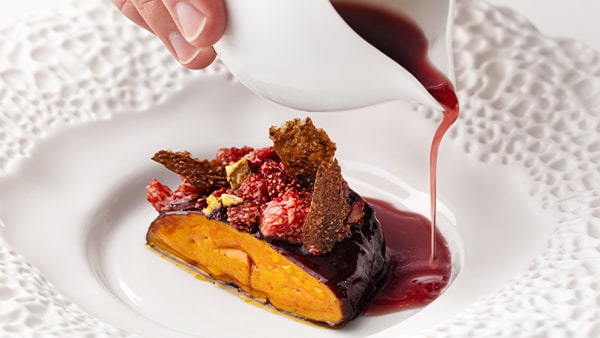
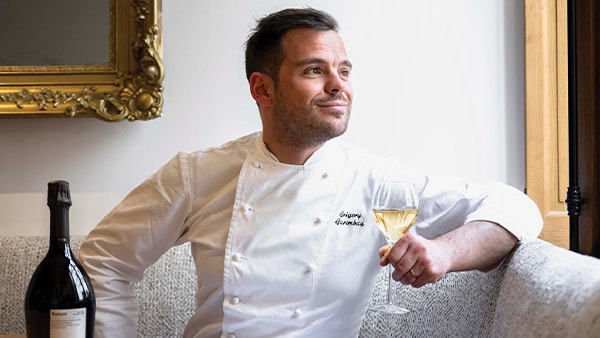
My luggage has already been whisked to Paris’ sexiest new hotel, Les Bains. I last came here when it was Les Bains Douches, and it wasn’t a hotel – it was a nightclub, with a swimming pool in the basement. The pool is still here, though there are no fashion models dancing the night away like there were on my previous visits (but maybe that’s because it’s 4pm on a Wednesday). It still opens as a club on weekends, inviting Paris’s most fashionable and connected clubbers. Iconic post-punk and new wave bands also played here back in the day, Joy Division, Simple Minds, the Psychedelic Furs and Echo and the Bunnymen among them, and in its 1980s pomp you might have spotted David Bowie, Andy Warhol, Grace Jones, Jean-Michel Basquiat and Yves Saint Laurent cavorting here. One of Basquiat’s contemporaries, the pioneering New York graffiti artist Futura, has left his mark on a slab of concrete in the ground floor restaurant.
My bedroom is chic and bohemian, with 1970s-inspired furnishings and a suggestive red light hanging by the bed. In the past, the guide’s hotels were picked mainly for their convenience, but now they are being judged by far higher criteria. In 2024, for the first time, the guide will expand its pages to include not only Michelin stars for the world’s most notable restaurants but Michelin ‘keys’ for hotels as well. Michelin have yet to reveal precisely how the ‘keys’ will work, but Poullennac describes the themes his team is looking for.
“It should be a destination in itself and it should provide a real local experience, like here at Les Bains where you can have lunch around the corner at Nicolas Flamel and then falafel from a hole-in-the-wall vendor for dinner. We won’t be featuring integrated resorts. We advise people to travel and discover cultures. We look for architecture and design, service, value for money. And we insist on authenticity; we want to see personal touches, we want to connect with people with unique stories and we want to create real memories. We have a wide range of hotels from casual to luxury, from design to traditional, but they all have something to say.”
In an age when most travel and food writers are ‘comped’ and self-appointed influencers are paid by hotels for their endorsements, an independent referee has never been more important to help the cosmopolitan adventurer navigate the assault course of options that are out there. From the point of view of this foodie and perma-jetsetter, Michelin remains the most reliable chaperone, whether you’re in search of buzzworthy street food or characterful digs you’ll remember well beyond your stay.
To book a trip to Paris, get in touch with The Travel Division at ACS at info@thetraveldivision.com or visit thetraveldivision.com
Picture Credit:
Picture 1: Les Bains-Douches
Picture 2: Hotel de Crillon
Picture 3: Les Bains-Douches
Picture 4: Château Voltaire

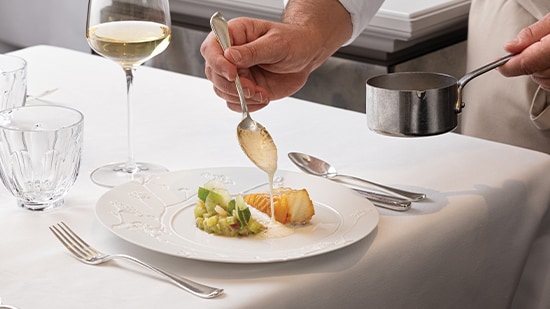 Adam Hay-Nicholls spends 48 hours in the French capital with the man behind the Michelin Guide.
Adam Hay-Nicholls spends 48 hours in the French capital with the man behind the Michelin Guide.

